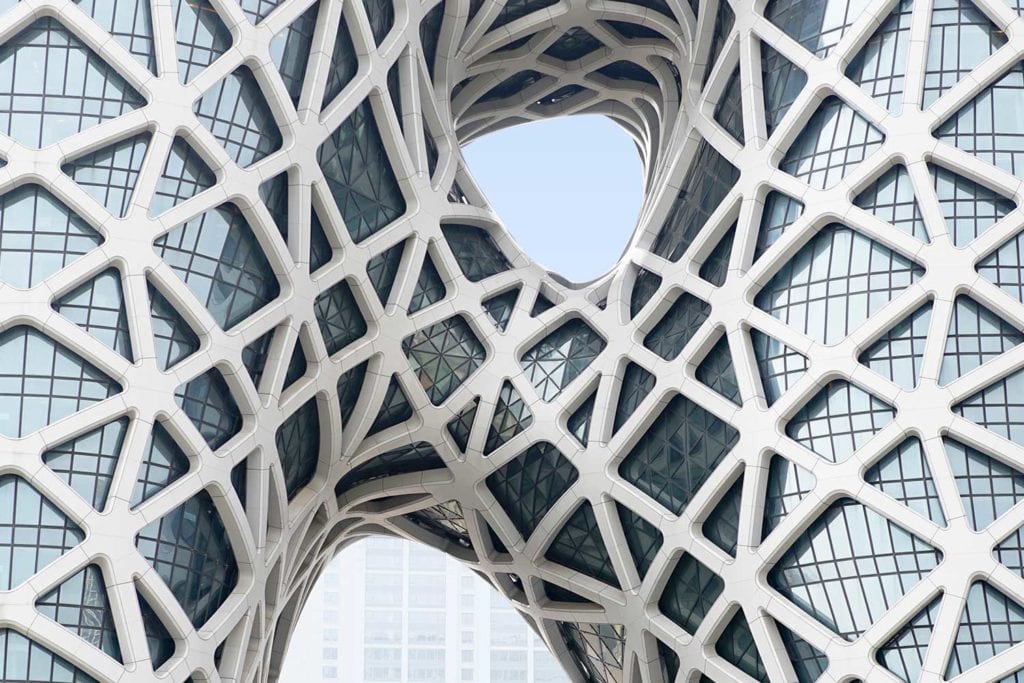Bright sparks in facade engineering
Our Facade Engineering team sheds light on the phenomenon of solar glare, how it is measured, and the work we are doing to combat its negative effects

What is glare?
Have you ever been dazzled by the sun through your office window? Or had to squint your eyes to see where you are going when driving down a wet road on a sunny day? Then you’ve experienced the unwanted effects of solar glare – the first direct from the light source, and the second reflected by another object.

Glare is scientifically defined as the physical discomfort of a viewer caused by excessive light or contrast in their field of view. That means it is not only an unwelcome phenomenon, but also a subjective one – dependent on the recipient’s field of view, and their physical and psychological characteristics.
Despite this, both direct and reflective glare pose significant problems in our built environment. The physiological effects on viewers can range from slight discomfort to temporary blindness, the latter of which could be highly dangerous. That is why, when we assess both proposed and existing buildings for their risk of glare, we take into account the potential effect on occupants and the general public, passing motorists and train drivers, and the concentration of solar reflection it creates.
How do we measure glare?
A number of metrics are available to assess glare. At Buro Happold, we use the Daylight Glare Probability (DGP) Index, which represents the ‘percentage of people disturbed’ by glare at vertical eye level in interior spaces. Our specialists have found that DGP has the best correlation with our experimental data, responds predictably to most daylight situations, and works with both direct and specular sources. It allows us to reliably predict the amount of glare experienced within internal spaces and informs our use of measures, such as solar shading, to control unwanted effects.

However, no metric is currently available that is specifically calibrated to measure the effects of external glare. Our engineers are looking to rectify this, working as part of the Illuminating Engineering Society to develop a common standard, but until then we take a combination of other measures into account.
Veiling Luminance measures the decrease in an observer’s visibility as a result of a bright source or object in their field of vision. We use it to analyse the light intensity – or luminance – of a building from specific locations, assess the level of discomfort it may cause to motorists and passers-by, and find ways to rectify issues accordingly.

Solar reflection from a building can cause thermal effects as well as visual issues, which may result in damage to adjacent properties. The Equivalent Sun metric is used to determine the number of reflections that are concentrated on an area and identify potential ‘hotspots’, and then the Solar Irradiance is measured to understand the level of electromagnetic radiation (heat) caused and the potential damage it could incur.

Engineers vs. glare
The issue of glare is complex, posing a variety of challenges that only truly integrated engineering can solve. Our lighting and facade engineers combine their understanding of the physics of lighting, material science and geometry to develop holistic strategies that combat glare. Ranging from building orientation and shading options, to choice of materials, to carefully planned external and internal layouts, we work together to improve the built environment from every angle. In addition to traditional engineering, our health, wellbeing and productivity team also harness their broad skill set to ensure key factors that enhance workplace performance and wellbeing are often incorporated into our designs, ensuring we deliver buildings that are beautiful and can perform for everyone.
Four tips for assessing and mitigating glare from our facade engineers:
1. When assessing the impact of glare, it’s important to be sensitive to location and time. An effect that only lasts a few minutes each day will be much more tolerable than one that lasts several hours, every day, for an entire season.
2. Matte surfaces will give more diffuse solar reflection, and are an excellent tool to control glare. For interior spaces, light yet matte colours and materials will create a bright aesthetic while minimising the impact of glare.
3. External shading can be extremely effective at solving localised glare challenges. It can effectively shield occupants within buildings, while also creating sheltered outdoor areas for people to enjoy.
4. Never discount simple solutions – sometimes blinds are the best and most convenient answer to glare issues!



